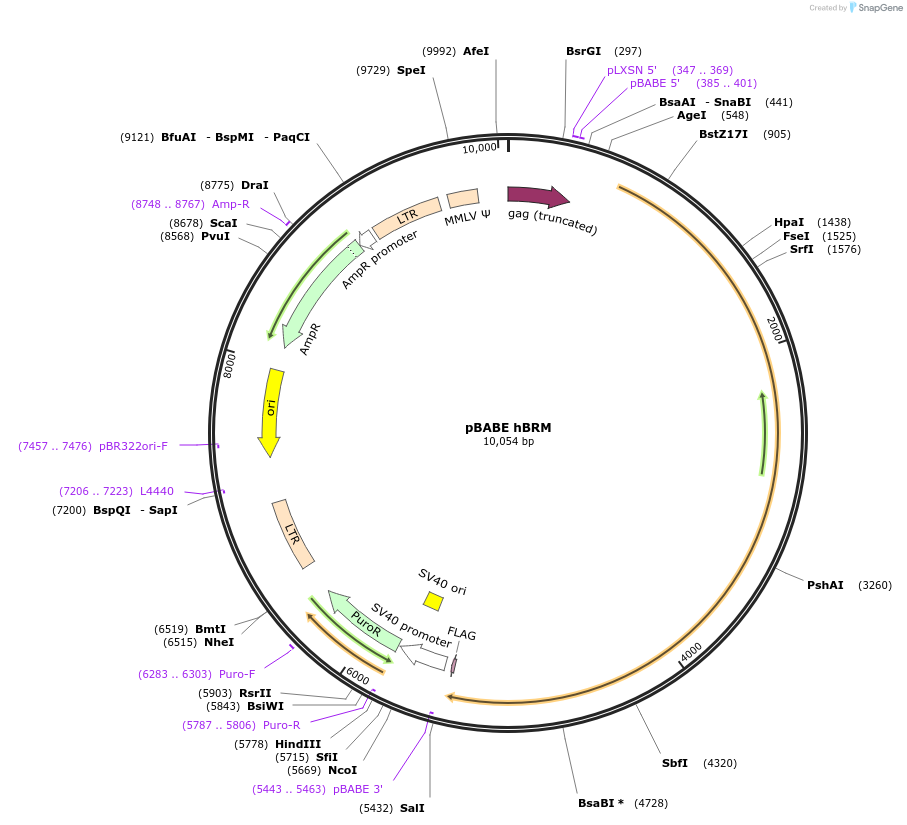-
Depositing Lab
-
Publication
-
Sequence Information
Ordering
| Item | Catalog # | Description | Quantity | Price (USD) | |
|---|---|---|---|---|---|
| Plasmid | 1961 | Standard format: Plasmid sent in bacteria as agar stab | 1 | $89 | |
Backbone
-
Vector backbonepBABE-puro
- Backbone size w/o insert (bp) 5200
-
Vector typeMammalian Expression, Retroviral
-
Selectable markersPuromycin
Growth in Bacteria
-
Bacterial Resistance(s)Ampicillin, 100 μg/mL
-
Growth Temperature37°C
-
Growth Strain(s)DH5alpha
-
Copy numberHigh Copy
Gene/Insert
-
Gene/Insert nameBRM
-
Alt nameBAF190b
-
SpeciesH. sapiens (human)
-
Entrez GeneSMARCA2 (a.k.a. BAF190, BIS, BRM, NCBRS, SNF2, SNF2L2, SNF2LA, SWI2, Sth1p, hBRM, hSNF2a)
-
Tag
/ Fusion Protein
- flag (C terminal on insert)
Cloning Information
- Cloning method Restriction Enzyme
- 5′ cloning site EcoRI (not destroyed)
- 3′ cloning site EcoRI (not destroyed)
- 5′ sequencing primer pBABE 5'
- (Common Sequencing Primers)
Resource Information
-
Articles Citing this Plasmid
Terms and Licenses
-
Academic/Nonprofit Terms
-
Industry Terms
- Not Available to Industry
Trademarks:
- Zeocin® is an InvivoGen trademark.
Depositor Comments
Vector: pBabe linearized with EcoRI and CIP'd. Insert: pBS-hBRM digested with EcoRI to liberate entire flag tagged BRM seq. (Kingston #1360)
These plasmids were created by your colleagues. Please acknowledge the Principal Investigator, cite the article in which the plasmids were described, and include Addgene in the Materials and Methods of your future publications.
-
For your Materials & Methods section:
pBABE hBRM was a gift from Robert Kingston (Addgene plasmid # 1961 ; http://n2t.net/addgene:1961 ; RRID:Addgene_1961) -
For your References section:
Purification and characterization of mSin3A-containing Brg1 and hBrm chromatin remodeling complexes. Sif S, Saurin AJ, Imbalzano AN, Kingston RE. Genes Dev 2001 Mar 1;15(5):603-18. 10.1101/gad.872801 PubMed 11238380







